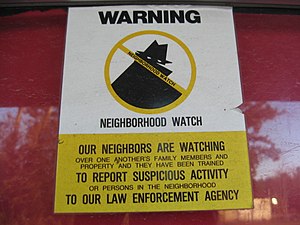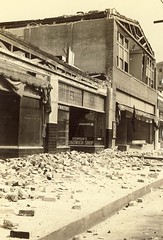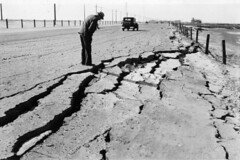Latest News
Wednesday, December 12, 2012
Monday, December 10, 2012
How to Prepare for an Emergency When you Travel
Take a look at FEMA's video on how to prepare for an emergency when you travel.
Sunday, December 2, 2012
Earthquake Insurance Rates to Lower
Check out article in LA Times about efforts of State Insurance Commissioner Dave Jones to lower earthquake insurance rates.
http://www.latimes.com/business/money/la-fi-mo-california-earthquake-insurance-rates-dropping-20121130,0,1784974.story?track=rss&utm_source=feedburner&utm_medium=feed&utm_campaign=Feed%3A+MoneyCompany+%28Money+%26+Company%29
 |
| California Insurance Commissioner Dave Jones (Photo credit: Wikipedia) |
Related articles
Saturday, November 24, 2012
What to Do About Your Pets in an Emergency
There are a number of resources available to remind pet owners what to do in the event of an emergency. Most importantly is the need to prepare. Make sure you have enough pet food and medications if your pet needs them.
See below for other suggestions.
Pet Disaster Safety Checklist
See below for other suggestions.
Pet Disaster Safety Checklist
Related articles
Tuesday, November 13, 2012
Emergency Kit
Take a moment to download the following checklist of what you and your family need to include in your emergency preparedness kit.
Prepare City Emergency Kit
Prepare City Emergency Kit
Friday, November 9, 2012
Tips for Parents
 |
| English: A neighborhood watch sign attached to a door. (Photo credit: Wikipedia) |
Related articles
FEMA Has Toolkit for Business Earthquake Survival
 FEMA has an excellent toolkit for businesses on how to prepare for and mitigate damages caused by an earthquake.
FEMA has an excellent toolkit for businesses on how to prepare for and mitigate damages caused by an earthquake.
If you click here you will find numerous resources to prepare your business. Do it today so that you can stay in business and fully recover after a major earthquake.
Related articles
Thursday, November 1, 2012
American Red Cross Ready Rating Program Helps You Get Prepared
 |
| English: Washington, DC, July 7, 2006 -- A Red Cross "ready to go" preparedness kit showing the bag and it's contents. Red Cross photograph (Photo credit: Wikipedia) |
Preparedness Essentials
The Ready Rating program is designed
to help your business or organization get better prepared for
emergencies. Below are the five cornerstone preparedness actions of the
Ready Rating program. When you join the Ready Rating program, you'll get
access to a detailed Ready Rating Program Guide that guides you through
each of these steps. This condensed version of the Program Guide is
designed to provide a snapshot of how the American Red Cross can help
your business get better prepared.The 123-point Red Cross Ready Rating 123 Assessment tool and Ready Rating 123 Program Guide are the result of a comprehensive review of preparedness recommendations conducted by the American Red Cross National Office of Preparedness and Health and Safety Services, the national Ready Rating team, and the American Red Cross Scientific Advisory Council. All Ready Rating program steps and recommendations are grounded in scientific research, best practices and/or expert opinion from respected professionals representing multiple disciplines and perspectives.
1. Commit to preparedness
This
step indicates your commitment to increasing your business' or
organization’s level of emergency preparedness during the course of the
calendar year. You will be working to make your business or organization
more prepared and to enhance overall community preparedness. Key actions for this step include:
- Having your business or organization make preparedness a priority by having senior leadership involved
- Appointing a Ready Rating liaison dedicated to completing the 123 Assessment
This step involves gathering information about possible emergencies that could impact your business and your facility’s capabilities to respond to and recover from a disaster or other emergency. Key actions for this step include:
- Knowing your region and the types of disasters most likely to impact your business
- Obtaining a Hazard Vulnerability Assessment from your local emergency management agency
- Considering which hazards your facility is most likely to experience, based on proximity and past events
- Knowing your business or organization’s current capacity to prepare for, respond to and recover from a disaster
- Assessing the physical capacity, supplies, equipment and
human resources of your facility to resist damage during a disaster
An emergency response plan describes the steps your business or organization will take to protect your business and employees before, during and after an emergency. Key actions for this step include:
- Identifying an emergency planning committee that is responsible for developing and implementing an emergency response plan
- Developing a written plan describing how your business or organization will respond during a disaster or medical emergency
- Creating a Continuity of Operations Plan (COOP)
This step involves continuing to work with the planning committee to implement the emergency response plan with employees. The key to implementing the plan is to make preparedness a part of the corporate culture. Key actions for this step include:
- Training employees on a regular basis about what to do during a disaster or emergency
- Acquiring and maintaining needed safety equipment and
emergency preparedness supplies - Showing employees how to be prepared at work and at home so they are better equipped to help the business respond to and recover from an emergency
- Conducting and assessing regular drills and exercises to determine the readiness of your employees and facilities
Now that your company and employees are prepared, make at least one additional commitment to ensure that the overall community is prepared for a disaster or other emergency. Key actions for this step include:
- Hosting blood drives
- Contributing supplies and/or services to emergency response efforts
- Adopting a local school or school district and support their disaster and emergency preparedness program
Related articles
Saturday, October 27, 2012
Lessons from the Zombie Invasion
| FEMA Zombie Unit, Front (Photo credit: Arthaey) |
LESSON
This lesson can be done individually or in pairs. Give the
students 2-3 minutes to create a list of items that they think they would need
in an emergency situation. If zombies, or real emergencies, are headed your
way, it is important to be prepared.
Have the students stand up with their individual lists. Start the
following narrative, and ask the students to sit down if the item mentioned in
the story is not on their list. The last person standing is the most prepared
in the event of an emergency.
Emergency
Scenario:
You and a friend are
in the middle of a zombie invasion. There is no time to head to the store, so
you are going to have to make do with what you have already put in your
emergency kit.
1.
The
zombies are starting to shuffle into the city. They have overrun the facilities
management outpost and the city water has been compromised. It’s time to make
use of your bottled water supply.
2.
After
hearing that the zombies are coming in from the west, you want to check on your
other friends and family members. Pull out your emergency contacts and
your cell phone.
3.
The
zombies have been attempting to tear down the power lines. The lights have
flickered a few times before finally shutting off. Now you are without
electricity. This means the refrigerator and microwave are out. Do you have non-perishable
food on hand to make dinner?
4.
It’s
starting to get dark and you stumble over furniture looking for a flashlight.
Do you have one?
5.
All
of that stumbling caused you to scrape your knee on the coffee table. Pull out
your first aid kit to bandage that up.
6.
It’s
dark out and you’ve camped out in the basement, the most secure part of the
house. Do you have a blanket or sleeping bag to keep you warm?
7.
While
trying to sleep, you hear loud noises and start to worry. You try to turn on
your radio for the latest updates.
8.
Why
is the radio not working? That’s right, it needs batteries. If you don’t
have any, you can use the ones from your flashlight… but ONLY if you have a candle
with matches. You still need a light source.
9.
According
to the radio report, the mayor has ordered an evacuation. You quickly gather
your supplies and make your way to the car. Don’t forget that the electricity
is out and you need cash on hand to make any purchases.
10. Wait, did the mayor say that Main
Street is closed and to head east towards Franklin? Which road should you use?
Pull out your map to navigate to safety.
Who
survived? Who did not? What was the most common item that knocked teams out of
the running.
Related articles
Tuesday, October 23, 2012
Italian Court Convicts Scientists for Failing to Warn About Earthquake that Took 300 Lives
It's a little far fetched that any court of law would hold scientists responsible for the 300 who died in a major earthquake because they failed to "warn" residents that an earthquake could happen -- but this just did occur in Italy. These scientists will serve 6 years in prison. Click here to read article on the court ruling. Also check out other stories below.
Related articles
Sunday, October 21, 2012
Schipske Joins CDC in Urging Residents to Get Prepared for Zombies
For Immediate Release
Contact: Office of Councilwoman Gerrie Schipske
562 570-6932
Schipske Joins Federal CDC In Calling For
Long Beach Residents to Prepare for
A “Zombie Apocalypse” -
“If You Can Prepare for a Zombie Attack –
You Can Prepare for an Earthquake”
Long Beach, CA – In just a few short days, the good people
of Long Beach will have to face the invasion of zombies at the annual “Zombie
Walk,” reminds Councilwoman Gerrie Schipske. “October 27th may be
traumatic for some, so I am urging residents to following the advice of the
Centers for Disease Control and get prepared.”
Schipske,
who has been working over the past 6 years to encourage residents to get ready
for an earthquake, thinks the CDC is clever in getting people’s attention by using
the popular “zombie” as a way to remind how to get ready to face any emergency.
Through a website, blog and “novella” comic book, the CDC is
urging residents to get ready for any type of emergency by posting such
messages as: “There are all kinds of emergencies out there that we can prepare
for. Take a zombie apocalypse for example. That’s right, I said z-o-m-b-i-e a-p-o-c-a-l-y-p-s-e.
You may laugh now, but when it happens you’ll be happy you read this, and hey,
maybe you’ll even learn a thing or two about how to prepare for a real emergency.” The site (http://www.cdc.gov/phpr/zombies.htm) also includes resources for teachers
who want to teach preparedness in the classroom.
“Getting prepared for a major emergency, no matter what type,
involves the same process,” says Schipske, who is also a Registered Nurse
Practitioner. “You need to assemble an emergency kit with things like water,
food, and other supplies to get you through the first couple of days. It will buy you some time until you are able
to make your way to an evacuation shelter or utility lines are restored. Then
you need to sit down with your family and come up with an emergency plan.
Decide where you will meet, how you will let people know you are ok, and an
evacuation route.”
Schipske has launched “Ready Long Beach” – a blog (www.readylongbeach.blogspot.com
) and Facebook page which posts weekly tips on how to get ready for an
emergency. “I just held a community workshop ‘Let’s Get Ready Long Beach’ and
it was clear from the questions of the participants that we need to educate
residents on how to get ready in case of an earthquake.” Schipske will sponsor
another community workshop on the weekend of March 10, 2013 which marks the 80th
anniversary of the Long Beach earthquake.
Related articles
Friday, October 19, 2012
If You Can Prepare for a Zombie Attack...Then You Can Prepare for Anything
The US Centers for Disease Control and Prevention has launched a clever social media effort aimed at reminding people just how necessary and easy it is to prepare for an emergency by pointing out that if you can get ready to a zombie attack (and it is coming to Long Beach on October 27 (click here for goulish details) then you can get prepared for other disasters, such as an earthquake.
Click here to read a cool comic book on preparing for a zombie attack and other disasters.
Click here to read a cool comic book on preparing for a zombie attack and other disasters.
Related articles
Schipske Launches Ready Long Beach -- Weekly Tips on Getting Prepared to Survive an Earthquake
 |
| March 10, 1933: LBC gets rocked (Photo credit: victoriabernal) |
 |
| 75 years ago: Long Beach earthquake (Photo credit: victoriabernal) |
 |
| Cracked highway near Long Beach, 1933 (Photo credit: California Watch) |
It could happen again in Long Beach just as it did on March 10, 1933. That is why Long Beach needs to get prepared. Each week Councilwoman Gerrie Schipske will post a tip on how to get ready to survive this natural disaster. She will also include links to news stories about earthquakes and how residents are preparing in other cities.
Related articles
 Please Participate in Great Shakeout on October 18
Please Participate in Great Shakeout on October 18 Fresno students join millions in statewide earthquake drill
Fresno students join millions in statewide earthquake drill Amica Insurance Offers Earthquake Safety Tips for Tomorrow's Great ShakeOut
Amica Insurance Offers Earthquake Safety Tips for Tomorrow's Great ShakeOut Get Ready! The Great California Shakeout is today
Get Ready! The Great California Shakeout is today US Participates in Quake Drill Today
US Participates in Quake Drill Today Earthquake measuring 5.1 takes place in Georgia
Earthquake measuring 5.1 takes place in Georgia
Subscribe to:
Posts (Atom)





























